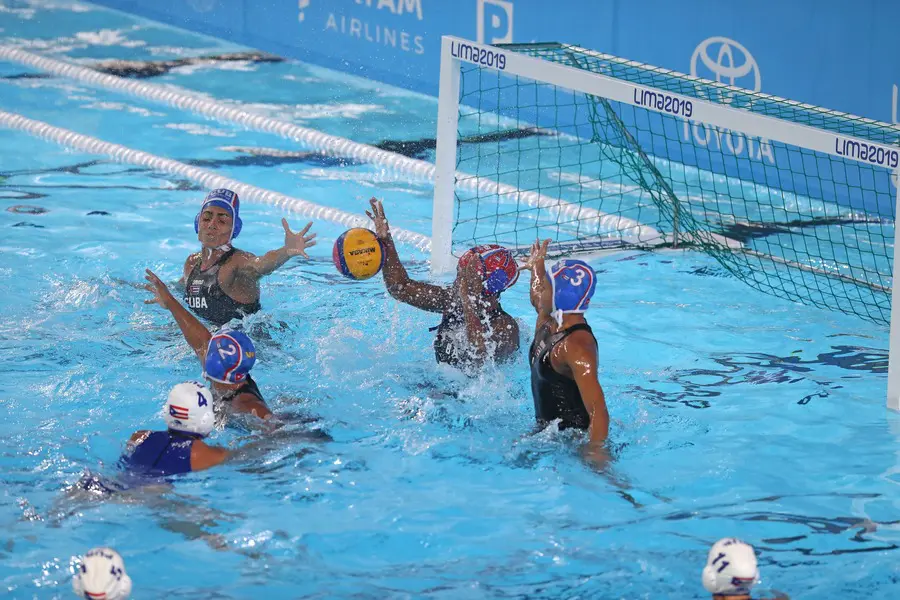In Fluidra we have extensive experience in the design and construction of water polo pools, one of the many types that we deal with within the framework of competitive events, whilst always respecting the regulations associated with each sporting practice.
Dive deeper with the eBook
Water polo pools are those built for the practice of the sport discipline of water polo, with the dimensions, depth and additional elements that allow competitions to be held in any of its variations.
The construction of water polo pools is based on the World Aquatics (former Fédération Internationale De Natation FINA) rules and regulations. This institution, in addition to identifying the criteria for the design and construction of these swimming pools, is also responsible for their approval to allow water polo matches to be held at professional level.
Based on official regulations, water polo pools have to have the following dimensions, differentiating between male and female competitions:
Male Competitions
- Length (between goal lines): Maximum of 30 metres and a minimum of 20 metres.
- Overall length: Maximum of 30.60 metres and a minimum of 20.60 metres.
- Width: Maximum of 20 metres and a minimum of 10 metres.
Female competitions
- Length (between goal lines): Maximum of 25 metres and a minimum of 20 metres.
- Overall length: Maximum of 25.60 metres and a minimum of 20.60 metres.
- Width: Maximum of 20 metres and a minimum of 10 metres.
However, for high-level sporting competitions, such as the national league, events associated with the World Aquatics federation and the Olympic Games, the dimensions must be the maximum indicated.
Nevertheless, the International Swimming Federation allows exceptions depending on the criterion of each federation. In the case of the Royal Spanish Swimming Federation (RFEN), the required dimensions are those outlined above.
With regard to depth, water polo pools maintain a unique standard, both in male and female competitions.
On this basis, the depth should always be a minimum of 1.80 metres, although it is recommended that it reaches 2 metres.
For such pools, their dimensions must also add up 34 x 25 metres, so as to have 13 swimming lanes across them with the minimum depth required.
You can consult all these regulations in the World Aquatics website.

Water polo pools also have other elements that must be taken into account, both in design and construction.
Within the playing zone, each area must be defined and marked with the regulated colours used in this sport discipline, respecting the official lengths and distances.
In addition, it is also necessary to have an obstacle-free height of at least 4 metres, although in international championships and Olympic Games this height is required to be at least 7 metres.
The beaches or platforms created for the control of the competition, and to allow for circulation around the pool, must also respect official measures registered in the regulatory rules.
In terms of the design of these facilities, it is important to pay attention to the detail of other factors, such as lighting. Solar orientated lighting that does not hinder the vision of the players, spectators, judges and coaches by reflections and glare on the surface of the water is recommended.
Meanwhile, the water must be kept at a temperature of 26ºC (+-1ºC) and in Olympic Games and world championships it must have a salt content of less than 3g/litre.
The optimal air temperature is also a value to be taken into account, not only in water polo pools, but generally in any indoor pool as well. Ideally, it should be between 2ºC and 3ºC above the pool water temperature, without exceeding 28ºC.
Due to the characteristics of this sport, it will also be necessary to install official goals, frames, nets, public address system, referee areas and control table, bench for players and coaches and, optionally, additional heated pools.
In Fluidra we carry out comprehensive water polo pool construction projects taking into account all these requirements, as well as the most recommended guidelines for an optimal design of these facilities.
